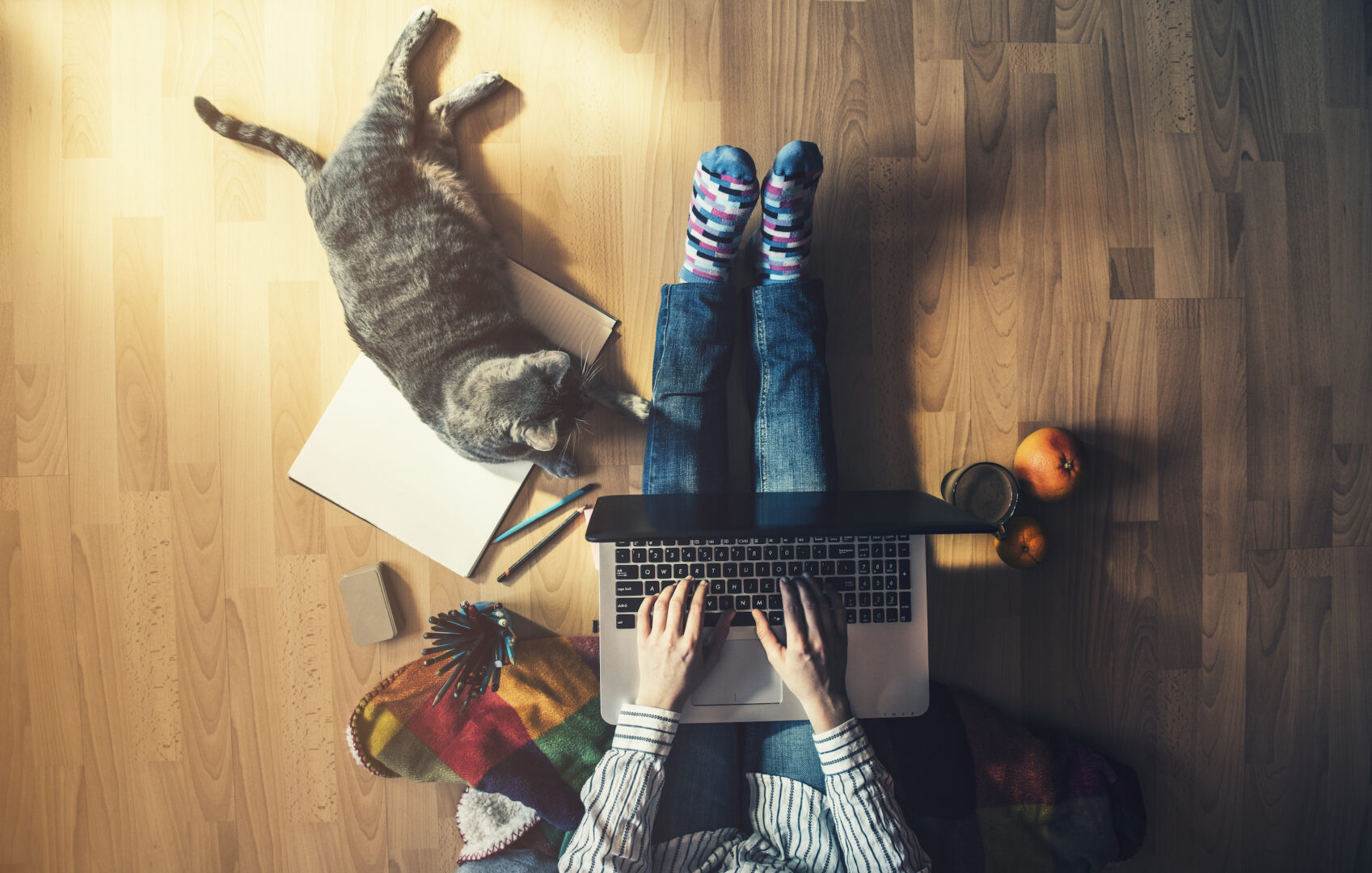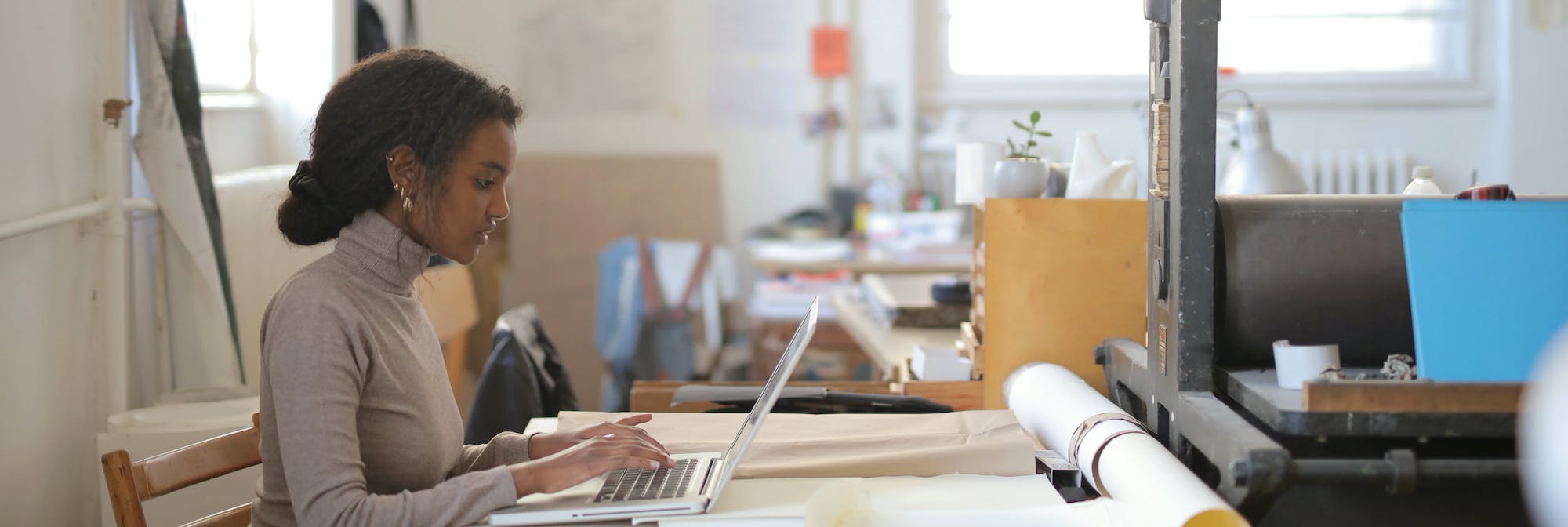As COVID-19 has evolved into a global pandemic, businesses all over the world are taking precautionary measures to protect the health and safety of team members and loved ones.
For some companies, these measures are as extreme as temporarily closing their doors. For many others, it means urging employees to work from home. While the goal is to continue a normal flow of operations, it can be challenging to ensure employees are able to keep fulfilling their responsibilities while working remotely.
Here are some best practices for working from home to help you stay productive (and maybe even enjoy it just a little) while working from home:
1. Dress for success
If you’re dressed for bed, your brain will think it’s bedtime. Dressing like you would for the office will help you set boundaries between work time and downtime as these lines often blur when you’re working from home. A study from Northwestern University found that dressing up in work clothes can influence the wearer’s psychological processes, putting them in a different mental state. When we dress professionally, we feel more present and engaged and express naturally higher levels of commitment to focus. That said, it’s probably ok to stay in your slippers.
2. Schedule your most important tasks first
Even if you’re the type of person whose brain fires up for ultimate productivity between the hours of 8pm and midnight, establishing a prioritized to-do list and checking off the top items first thing in the morning will create space in your day for the unexpected while working from home. With communication now entirely online, everything seems to take a little longer to coordinate and complete. So, consider creating a daily event on your calendar for 90 minutes and prepare to work on your most important task without distraction.
3. Over-communicate
Maintain open, clear and consistent communication with your direct supervisors and team if you want to effectively work from home. Leverage your internal communication tools to facilitate quick and efficient communication and schedule regular check-ins and status updates to ensure everyone is aligned. Try organizing your to-dos by three simple headings like “Completed Yesterday, “To Do Today,” and “What’s Blocking Me.” Think of it as the ultimate way to Marie Kondo your to-do list. When you work this way, issues are more quickly identified, solutions are shared and collaboration is strengthened.
4. Limit distractions
Put the TV remote in a drawer and place your favorite book on the coffee table instead. This can be a very simple swap to help you avoid the temptation of Netflix’s auto-play during work hours. You can also avoid the disruptions from social media by replacing your entire news feed with an inspiring quote. Momentum is a custom web extension designed for people who open new tabs in their browsers often. Instead of getting the default New Tab page, you’ll get a personalized dashboard with a motivational quote and a stunning image which update every day.
5. Take breaks
Though you may feel pressured to overextend yourself while working remotely (perhaps to prove to your team that you are actually working while you’re at home), it’s critical to carve out time to take a break. Nearly 90% of American workers say that taking a lunch break makes them feel more refreshed and mentally ready to get back to work. The automatic time-tracking software company, DeskTime tracked their 40,000 users, and found that a 17-minute break after every 52 minutes of focused work struck the sweet spot for ultimate productivity. Utilize your company’s internal communication apps like Slack to notify others that you’re taking a lunch too. Doing so not only will keep work out of your mind while you’re taking your at-home lunch break, but it will also encourage others to get out of their “office space” while working from home.
6. Commit to logging off
As though you were leaving the office, close and step away from your computer or even turn your computer completely off while working from home. Creating and keeping these boundaries makes you more productive when you’re on the clock and limits the potential for burnout. If you’re finding that you work much longer at home than in the office, you may want to look into setting a schedule on your computer to automatically shut off after a given time. To really help your brain wind down, block blue light for at least two hours before hitting the sheets. Blue light suppresses melatonin for about twice as long as green light and shifts circadian rhythms by twice as much. If you’re not into the idea of a screenless evening, New York Magazine kindly put together this list of the best blue light blocking glasses on the market today.
7. Embrace it
It’s not a crime to enjoy the benefits of working from home. Let yourself appreciate a quieter environment; take a break to do some meditative tidying, spend a little time with your family over a midday meal together, or call a long-distance friend on the phone. Just because we’re practicing social distancing, that doesn’t mean we have to isolate emotionally. And for some in-home physical activity, Obé Fitness streams live workouts and offers more than 4,000 strength training, cardio and yoga classes online.
These are challenging times, but it’ll serve us and our global community to remain positive and optimistic. As global leaders maintain a constant discussion about every aspect of the situation – economic, operational, social and cultural – we can do our part by keeping ourselves and each other healthy and safe.







